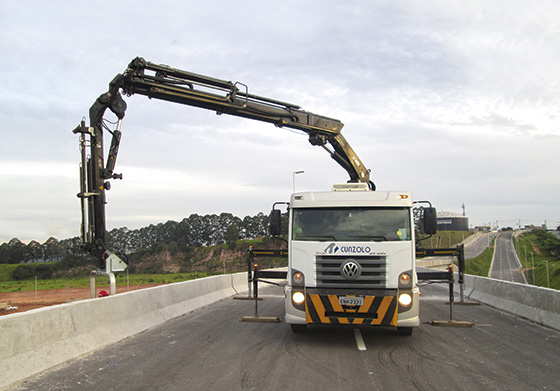Working against their abandonment

Being not too common in Brazil, equipment has to overcome the lack of monitoring and repair in bridges and viaducts by the responsible organs to move on
In 2012, a research carried out by the Federal Court of Auditors (TCU) frightened a lot of people when indicated that most of the more than 6600 bridge and viaduct (special works of art) structures of the country were in critical conditions: they were not inspected or maintained during long time and—what is even worse—they could collapse at any moment.
This is obviously a very serious situation, mainly because the National Department of Transport Infrastructure (DNIT) mapped only 25 percent of this legacy, giving efforts to start registration procedures for the remaining works in a more efficient way.
The situation became a little better after that time, since the DNIT—according to Adailton Dias, its temporary director of infrastructure—has 5114 bridges and viaducts already mapped and knows that most of those special works of art are more than 20 years old, what alerts for the need of inspection to prevent that they fall in the abandonment.
DNIT does not inform the quantity of bridges and viaducts that were not inspected recently but ensures that this is a constant work that is being accelerated, mainly after the installation of a system that allows the technicians of the department to collect information in the field using tablets and transmitting data in real time. This would really be the main evolution of the Computerized Management System of Special Works of Art, according to Dias.
Facing this scenario, M&T went to the field to understand till what point the amount of inspection and maintenance works of bridges and viaducts evolved in the country. Under the point of view of equipment manufacturers, we also verified if a hypothetic larger volume of projects for special works of art would balance the lower investments in road construction and rebuilding. For Cunzolo and Socage, two national companies that offer solutions in training people for this type of service, the answer was the same: no.

Av. Francisco Matarazzo, 404 Cj. 701/703 Água Branca - CEP 05001-000 São Paulo/SP
Telefone (11) 3662-4159
© Sobratema. A reprodução do conteúdo total ou parcial é autorizada, desde que citada a fonte. Política de privacidade














